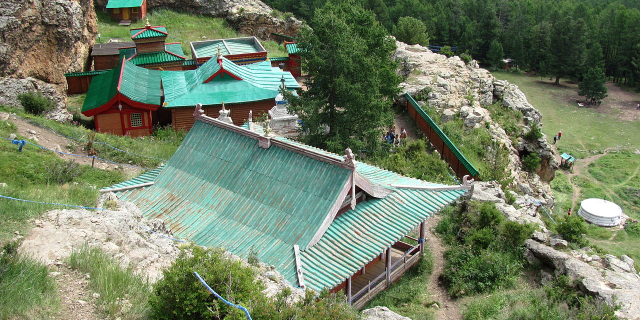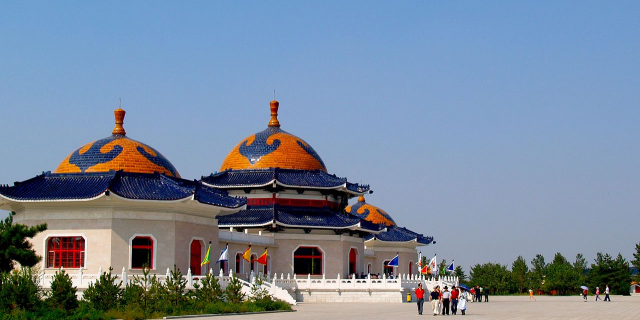Gobi Desert
The Gobi Desert (Mongolian: Говь, ᠭᠣᠪᠢ, ; Chinese: 戈壁; pinyin: gēbì) is a large, cold desert and grassland region in northern China and southern Mongolia and is the sixth largest desert in the world. The name of the desert comes from the Mongolian word Gobi, used to refer to all of the waterless regions in the Mongolian Plateau, while in Chinese Gobi is used to refer to rocky, semi-deserts such as the Gobi itself rather than sandy deserts.
There is little information about early habitation of the Gobi desert.
Lisa Janz has proposed a system of nomenclature for early Gobi desert habitation. They are Oasis I, Oasis II, Oasis III. [1][2]
Oasis I is equivalent to the Mesolithic from 13500 cal BP to 8000 cal BP. During this time people began using oases. It is characterized by:
micro blades small milling stones small tools plain, low fired, pottery with high organic content.[1]Oasis II is equivalent to the Neolithic from 8000 cal BP to 5000 cal BP. People used the oases extensively. It was characterized by:
micro blades milling stones chipped macro tools adzes axes high quality cryptocrystallines honeycomb imprinted, corded, string paddled, low and high fired pottery with a sand and gravel mixture. [1]Starting around 8000 cal BP there was a warm wet phase in the Gobi desert. [2]By 7500 cal BP lake levels in the Western Gobi reached their peak. Around this time there was meadow steppe vegetation around lakes. In Ulaan Nuur there may have been shrubby riparian woodlands.[1]
Oasis III is equivalent to the Bronze Age from 5000 cal BP to 3000 cal BP. It is characterized by:
micro blades chipped micro tools bifacially flakes arrowheads blades knives grinding stones copper slag high quality chalcedony bone beads, clay spindle whorls plain, string paddled, moulded rim, painted, geometrically incised, high and low fired pottery with mixture of sand, gravel, mica, shells, and fiber. [1]Bronze Age herder burials have been found in the Gobi desert, as well as Karasuk bronze knives, and Mongolian deer stones. [1] Between 5000 cal BP and 4500 cal BP there was a period of desertification. [1][2] Due to the increasing aridity between 3500 cal BP and 3000 cal BP there was a decline in human habitation in the Gobi desert. [1] Prehistoric petroglyphs have been found in Southern Mongolia in 1997.[3]
European and American explorationThe Gobi had a long history of human habitation, mostly by nomadic peoples. The name of Gobi means desert in Mongolian. The region was inhabited mostly by Mongols, Uyghurs, and Kazakhs.
The Gobi Desert as a whole was known only very imperfectly to outsiders, as information was confined to observations by individual travelers engaging in their respective itineraries across the desert. Among the European and American explorers who contributed to the understanding of the Gobi, the most important were the following:[4]






























Add new comment